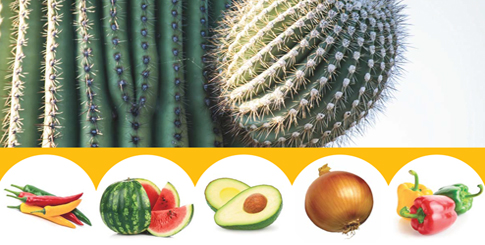Mike Righetti, managing member at Righetti Farms, LLC, says the season started off well in the fall and was expected to carry over into the early months of this year. “Since we were oversupplied last year,” he says, “I don’t think we will see overproduction in 2018—which translates to healthier f.o.b. (shipments) or more value in the commodities, and more interest by customers.”
Not surprisingly, customers like to buy items with greater value. “When you’re at consignment levels and pricing, it doesn’t attract as much interest,” Righetti explains.
Thinking ahead
As growers are expected to come into 2018 with lower yields than 2017, it should offer better markets and margins, and depending on the weather—always the wild card—it could be an exciting year in terms of pricing and availability. Of course, distributors and exporters have to try to anticipate volumes and values to manage their businesses.
In terms of estimating crop production and future yields from Mexico, Ley Vela does more than guestimate; he reviews crop permits. “When you decide to grow a certain crop in Mexico, you need a permit,” he explains.
“The permit contains the number of hectares you intend to grow along with the medium—field, shade house, and so forth,” Ley Vela continues. “As you begin to plant, you turn in the permits and they’re available to the public.”
Greenhouses and shade houses
Del Campo’s focus is predominantly tomatoes and peppers, with lesser quantities of strawberries and other items. “We’ve seen an increase in demand for Roma tomatoes as well as more stable markets across the category,” Ley Vela says.
And with Canada “growing greenhouse varieties year round, they’re competing directly with Mexico during the winter, which used to be a Mexican market,” Ley Vela explains. “Where that will go, we don’t know, but we’ve seen production increase year after year.”
“Shade house [growing] has been on the rise for the past few years,” contributes Raquel Espinoza, director of sales and marketing at Produce House, LLC. “We get a better yield and better quality, particularly in Romas and cucumbers. We also grow colored bell peppers in shade houses.”
Espinoza says she is anticipating a growth spurt for Produce House next year, though she anticipates “some shortages coming, maybe in bell peppers.”
Higher volume
Distributors moving shade house and greenhouse vegetables are forecasting a solidly positive outlook for 2018. “We’re anticipating continued growth in dry vegetables and have added volume in cucumbers and green peppers,” comments Chris Ciruli, chief operating officer of Ciruli Brothers, LLC.



